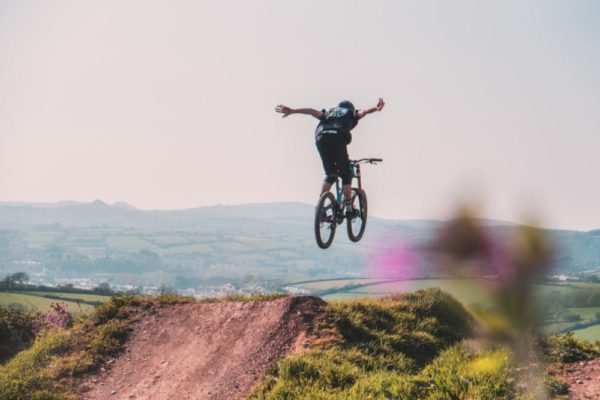

Any hand therapist knows that teaching out your arm to brace for a fall is instinctual.
It’s no surprise, then, that some of the most common mountain biking injuries are fractures of the wrist, hands, fingers and elbows. When a bike’s front tire hits a rock or loose dirt, it can cause the rider to fly off the bike and land on an outstretched arm.
Hand and wrist fractures often require immobilizing the involved bones and joints to allow for proper healing. Depending on the injury, Certified Hand Therapists (CHTs) can create custom thermoplastic (moldable) orthoses.
These types of orthoses tend to be “removable, lighter and more comfortable” than traditional casts, according to Tony Dao, an occupational therapist/CHT at Rebound’s East Clinic and the Director of Hand Therapy.
Rebound’s hand therapy team is also composed of CHTs Matt Hayes (PT) and Lisa Cena (OT) at Bend’s East clinic, and Ericka Hranicka (OT) in Redmond.
Hand therapists play an active role in the rehab process: following protocol and orders from an orthopedic physician, therapy post-fracture involves improving hand, wrist and arm range of motion and muscle strengthening.
Improving fine motor (muscle) coordination and manipulation —moving objects within one hand— is another important part of the rehab process, said Dao.
Mountain bikers can also experience hand and wrist pain as a result of repetitive motion injuries, according to Dao. When riding uneven terrain, shock is absorbed through the handlebars and arms, putting added pressure on the hand and wrist.
A common overuse injury is carpal tunnel syndrome, which occurs when one of the major nerves to the hand (median) is compressed, causing pain, tingling and numbness in the hand and arm. Similarly, Guyon’s Canal Syndrome involves the entrapment of the ulnar nerve as it passes through a tunnel in the wrist.
In addition to supporting the wrist with an orthosis, CHTs can give patients exercises to help relieve some of the pressure on the median and ulnar nerves.
Dao recommends wearing well-padded mountain biking-specific gloves to help absorb the shock from riding. Gloves should fit snugly while still allowing for good hand dexterity to shift gears and handle the brakes while riding, he said.
If you are experiencing hand and wrist pain while mountain biking—or sustain an injury from a crash—schedule an appointment with one of Rebound’s CHTs to be evaluated. Our therapists are here to help you get back to riding pain-free.
